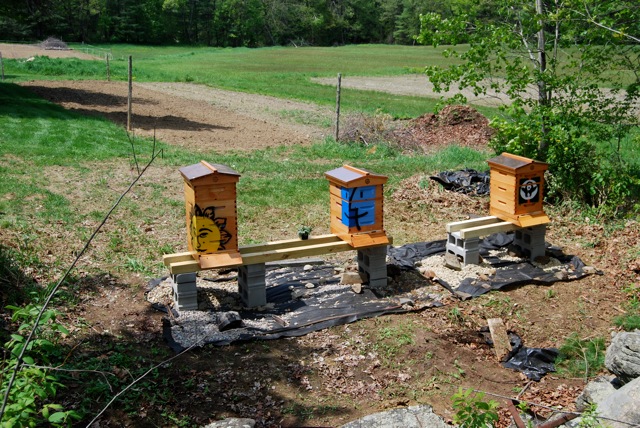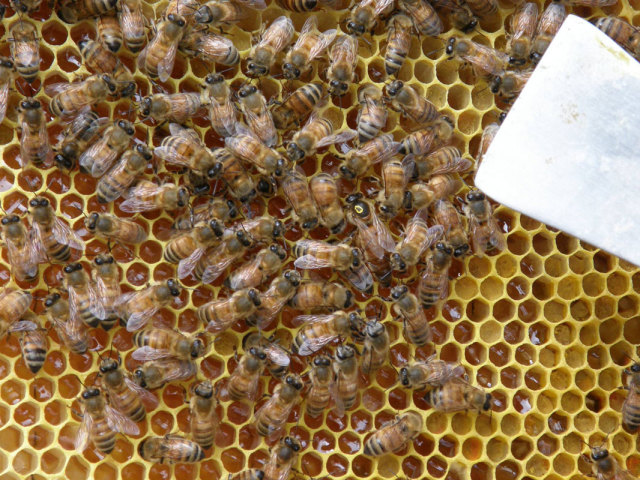It was the first time looking at the bees since November.
Good news and bad news.
The good news is that 4 of the colonies are doing great. Below is an image of one of the Nucs that wintered on top of an Overland Over-winter-inator-atortm. You can see that there are plenty of bees grouped in an area (the cluster). And what you can’t see is that there are plenty of honey stores left – so these bees have (in my book) made it through the winter.

OK, now the bad news. The full-sized hive underneath the Over-winter-inator-atortm (Roger) didn’t make it. They all ended up in one of the top corners of the hive and starved. Below you can see them all in one area. On the surrounding frames there were many bees all the way into the cells where they died eating the last drops of honey that were in their vicinity.
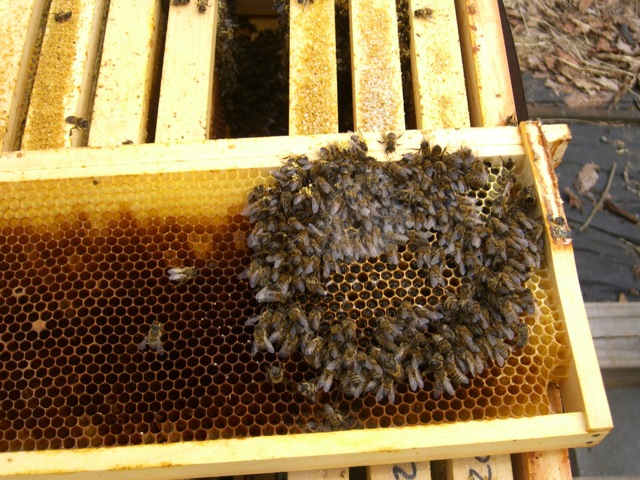
Below is the ball of bees as they died. The sad part is that there is plenty of honey and pollen left in the hive. I think that the problem was that they did not start out in the bottom box, then they moved up and to the side and got stranded in the corner.
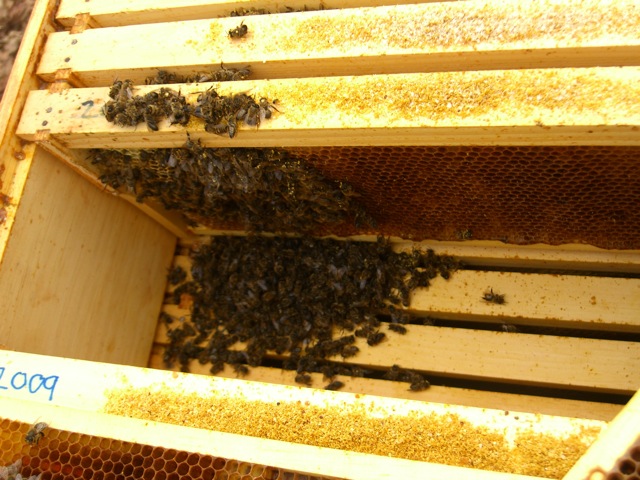
The sad, but amazing testament to the way a beehive works, is that in this (very blurry-sorry) photograph below you can see the red dot on the back of the queen (2008) at the absolute top of the heap. The colony did their very best to keep her alive all the way until the end.
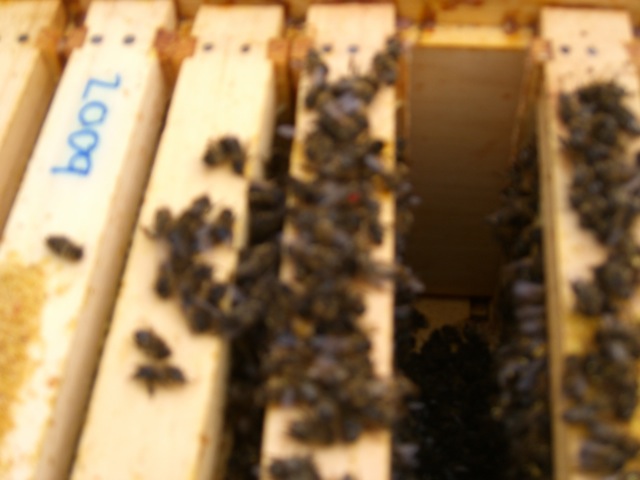
But the show must go on, and the lessons learned absorbed for the next season. The remaining 4 colonies will be the backbone of our micro-apiary for the coming year as we continue expansion and education.
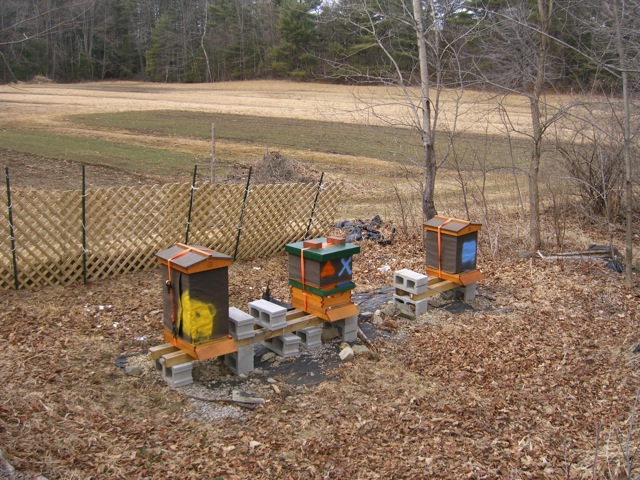
And even better, the flowers are starting to bloom and Spring has arrived in Maine…
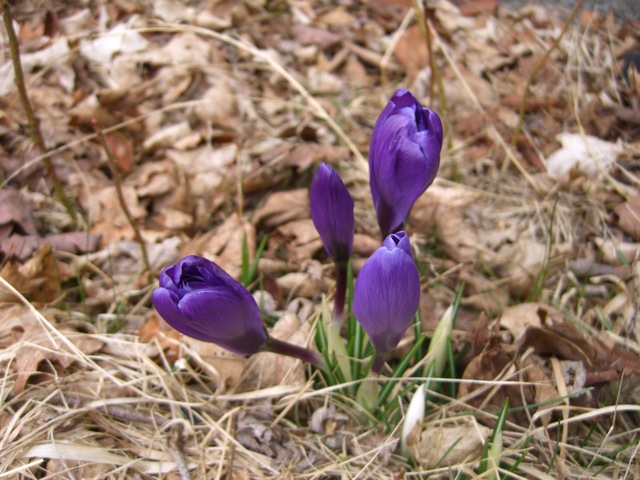
Hope to see you out in the bee yard.

